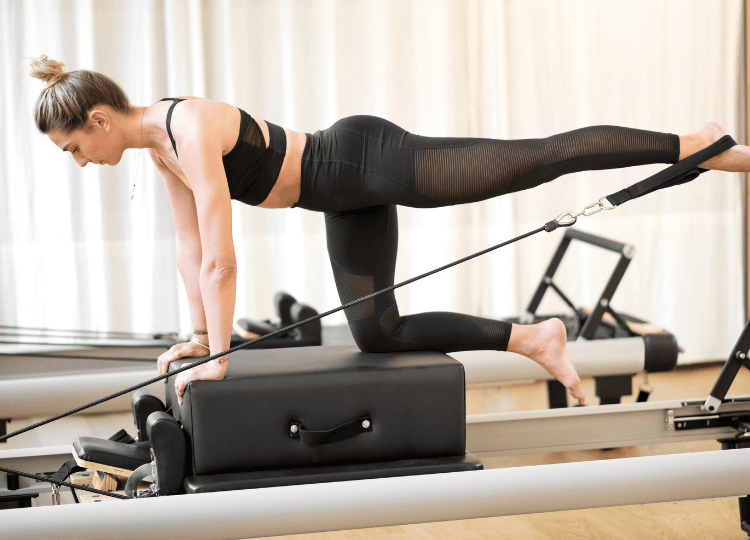Pilates isn’t new, but let’s be honest: it’s having a moment.
Once a quiet studio secret, reformer Pilates is now on everyone’s lips (and calendars). It’s the avocado on toast of fitness… Instagrammable, a touch indulgent, and ultimately very good for you.
So, if you’re tempted to bring that studio magic home, here’s what to consider before clicking add to cart on one of those fancy pilates reformer machines.
Why Invest in a Pilates Reformer at Home?
Sure, mat Pilates is great. But once you’ve experienced the reformer, it’s hard to go back. With its sliding carriage, adjustable springs, and endless repertoire of exercises, a reformer lets you build strength, improve flexibility, and train mobility in ways a yoga mat never could.
Beyond the fitness benefits, there’s the convenience factor. No waiting lists, no studio memberships, no timing your class around traffic. You can work out at 6 a.m. before your first espresso, or sneak in a session after dinner in your pajamas. And if you’ve been dropping $40 a class, a reformer pays for itself surprisingly quickly.
1. Space and Storage
First, the unglamorous but essential question: where will this thing live?
Reformers aren’t exactly pocket-sized. A full-length model can stretch out around eight feet long, and you’ll also need clearance around it for your arms, legs, and, yes, the occasional dramatic roll-up. Measure your space before falling in love with a machine online because nothing kills the vibe like realizing your dream reformer blocks the path to your kitchen.
If you’re working with a smaller apartment, there are compact and foldable options. Some slide neatly under a bed, others tuck against a wall when not in use. Pay attention to the weight, too. A solid steel frame looks chic, but if you’re dragging it across the floor every other day, wheels suddenly feel very luxurious.
2. Budget
Now for the part that makes most people blink twice: the price. Reformers can run anywhere from $500 to upwards of $5,000, which is why setting a realistic budget early on is crucial.
At the entry level, you’ll find lighter, portable models, which are perfect if you’re a beginner or dipping your toe into the world of reformer Pilates. Mid-range machines ($1,000–$2,500) often bring sturdier frames, smoother carriages, and more adjustability. If you’re serious about your practice, or just like nice things, premium reformers ($3,000+) are basically studio-quality equipment designed to last forever.
Think of it as an investment, not just a splurge. If you’re someone who thrives on Pilates, it’s the kind of purchase you’ll use for years, not months.
3. Adjustability and Comfort
Pilates is all about precision, and your reformer should adapt to you, not the other way around.
If multiple people will be using the machine, look for adjustable footbars, headrests, and ropes. A carriage that slides smoothly, a well-padded surface, and springs that change resistance easily all make the difference between “effortless flow” and “fighting with your equipment.”
Height matters, too. Taller users should check the reformer’s length and if you’re petite, adjustable ropes and lower footbars can help everything feel aligned.
4. Quality and Durability
This is where you separate the flimsy from the forever.
Look for frames made of steel or aluminum if you want strength and stability. Wood frames? Gorgeous, timeless, and sturdy, but heavier and harder to move. Either way, the goal is a reformer that feels solid, not shaky.
Check reviews (yes, dig into them). Do people complain about squeaky carriages or broken springs after a few months? Or do they rave about buttery-smooth rides and silent operation? Remember: a reformer is only as good as its mechanics.
5. Accessories and Versatility
Here’s where it gets fun… accessories.
A jumpboard can turn your reformer into a low-impact cardio machine. A tower attachment adds even more upper-body work. A Pilates box? Essential if you want to expand into seated or prone exercises. These extras aren’t strictly necessary, but they do broaden the range of what you can do, and help keep things fresh if you tend to get bored.
Some reformers come with bundles, while others sell everything à la carte. If you know you’ll want the extras eventually, it’s often more cost-effective to buy them together.
Matching the Reformer to Your Goals and Experience
Here’s the real question: what do you want out of this?
Beginners: Go for something simple, reliable, and not overly expensive. You’ll learn the basics without feeling overwhelmed by gadgets.
Intermediate or advanced practitioners: Look for sturdiness, smooth resistance, and more adjustability. You’ll want a machine that grows with you.
Rehab or mobility focus: Prioritize comfort and adjustability. Softer resistance springs, padded carriages, and easy customization make workouts safer and more supportive.
Athletes or strength enthusiasts: Invest in a reformer that can handle higher resistance and frequent use. You’ll appreciate the durability.
Small-space dwellers: Compact, foldable models with wheels will be your best friends.
Home vs. Studio Reformers
Finally, let’s clear up a common question: do you need a studio-grade reformer at home?
Unless you’re an instructor or planning to run a side hustle in your living room, the answer is probably no. Studio reformers are built for constant daily use by dozens of clients, which is why they’re massive, heavy, and expensive. For most people, home-friendly reformers are more than enough.
Bottom Line
Choosing a Pilates reformer for your home isn’t just about buying equipment, it’s about curating a space where fitness feels like a treat, not a chore. Measure your space, set your budget, prioritize quality and adjustability, and don’t forget to consider your own goals.
A reformer is an investment, yes, but it’s also a passport to daily movement, better posture, and that strong-yet-graceful feeling Pilates people are known for.
Pick the right one, and your living room might just become your favorite studio in the city.
